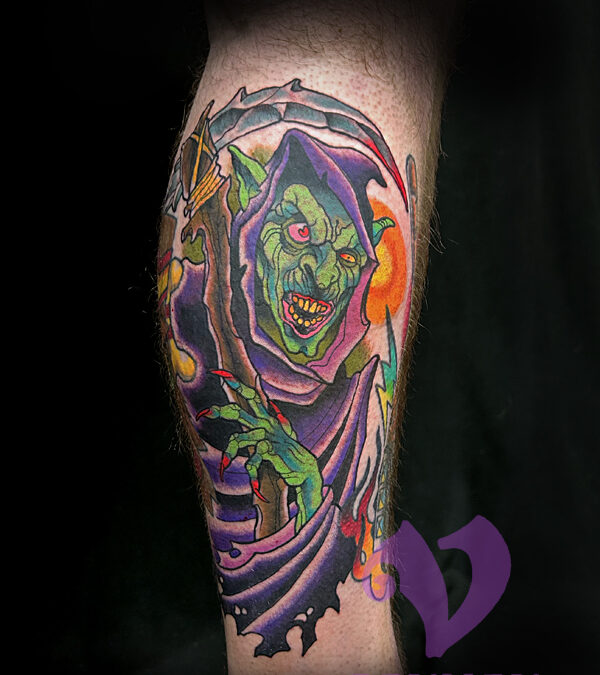This goblin tattoo is the newest addition to our clients tattoo collection.
The client wanted a grim reaper but with a cool looking goblin.
We had to design it to fit into a limited space between other tattoos.
Only specific request from client was a purple robe.
Looking for a Cool reaper or Goblin tattoo?
Just go to our Tattoo Request Form to get your tattoo project started!
About goblins
Goblins are mythical creatures that appear in folklore and fantasy literature.
They are often depicted as small, mischievous beings with a penchant for causing trouble.
However, goblins may vary in appearance and behavior in different cultures.
They share common characteristics such as being small in stature, pointed ears, and a fondness for mischief.
Goblins are commonly featured in various mythologies, fairy tales, and fantasy stories.
They are sometimes portrayed as malevolent creatures that create chaos and harm.
In contrast, they may simply be mischievous tricksters.
The depiction of goblins can differ greatly depending on the cultural context and the specific narrative.
Popular culture
In European folklore, goblins are often portrayed as small, grotesque creatures with a penchant for causing trouble.
In addition, they are sometimes associated with mines and caves.
Goblins are prevalent in English folklore, where they are often depicted as small, impish creatures.
They are known for their trickery and pranks.
In German folklore, goblins are referred to as “kobolds.”
Kobolds are household spirits that can be mischievous or helpful depending on how they are treated.
Scandinavian folklore features creatures similar to goblins known as “tomte” or “nisse.”
These beings are often associated with farms and are believed to bring good fortune if treated well.
Also, Goblins have become popular characters in fantasy literature.
This includes works like J.R.R. Tolkien’s “The Hobbit” and the “Harry Potter” series by J.K. Rowling.
In these contexts, goblins often take on specific roles and characteristics within the fantasy worlds created by the authors.
Goblins have also become iconic creatures in role-playing games such as Dungeons & Dragons.
As a result, they are typically portrayed as small, aggressive humanoid creatures that adventurers may encounter in various quests.
Goblins continue to be featured in various forms of popular culture, including movies, TV shows, and video games.
Therefore, their portrayal can range from malevolent tricksters to sympathetic characters.
In conclusion, the word “goblin” is believed to have originated from the Medieval Latin term “gobelinus.”
To clarify, this refers to a mischievous spirit or demon.
